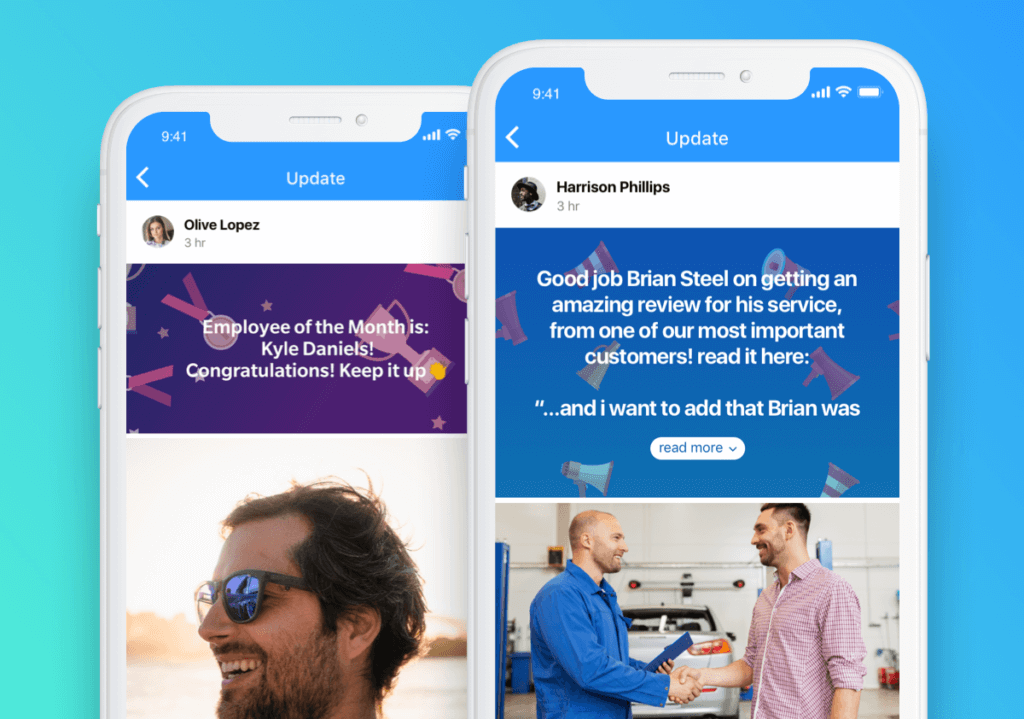Ah, the dreaded employee evaluation is marked on your calendar and you wish it wasn’t. Sound familiar? Like most managers, employee evaluation and having to fire employees are the most disliked tasks. But alas, they are the tasks that must be done! Just like payroll and time management.
As a manager, you know the benefits of having a productive employee. It’s that great performance that can take your business to the next level and outshine your competition. However, an employee who is performing poorly may be detrimental to your company’s success. To make sure employees perform to your expectations, you have to gauge their performance.
By evaluating employee performance, you have various metrics that shed a light on how an employee is doing. If there are negative points then you can immediately create an action plan to help turn things around in a timely fashion. However, if you have a difficult employee then be sure to address these issues immediately before things spiral out of control.
However, there are many who argue that an employee performance evaluation has the opposite effect that employers desire. Instead of boosting confidence and taking your company to the next level, the employee performance evaluation only conjures negative emotions. That’s why we’re here, we want to settle the debate once and for all! After consulting with managers and employees alike, we’ve compiled the pros, the cons, and the new approach to employee performance evaluations.
The Good: Pros of Employee Performance Evaluation
Documentation.
While this doesn’t appear like a true advantage of using an employee performance evaluation, hear me out. By performing an evaluation, you have physical documentation throughout the employee’s career that you keep in their records or file.
You can refer back to the employee performance evaluation to track performance, like what changed and improved, if setbacks occurred, etc. Also, if the case ever arises that you need to let an employee go, you can refer back to the employee performance evaluation to serve as cause for the firing.
Recognize Employee Strengths and Weaknesses
As a manager, you must regularly assess your employees’ strengths and weaknesses so that you can best match their qualifications for job assignments. Through the use of an employee performance review, you can assess an employee’s strengths and weaknesses, AND you can clearly see what talents lay whereby department or team.
Employee recognition cannot go unnoticed. In fact, a study found that companies who genuinely invested in employee support and satisfaction had happier employees.
Training and Development
Thanks to the point above, an employee performance evaluation outlines an employee’s strengths and weaknesses so that you can clearly determine what training is needed. The purpose of training is to support an employee acquiring new skills; additionally, an employee’s development helps to build their aptitude and current performance which benefits both the employee and employer. Through an employee performance evaluation, you can learn that an employee would benefit from a professional development workshop as he or she is a finance manager and the workshop would help enhance their business communication skills.

An Opportunity For Feedback
Every employee wants feedback and that’s exactly what the employee performance review offers, the chance for the employee and employer to discuss his or her performance, what goals were met, and creates an opportunity for the discussion of development opportunities.
Encourage the employee to share his or her thoughts, ideas, and concerns. Allow them the chance to discuss how they viewed their own performance. Ask them what they’re most proud about, what they’re worried about, what goals they want to set for themselves for the year ahead, and what they want (raise, promotion, development, etc.)
It’s also an opportunity for the manager to clarify what they expect of the employee and to discuss issues about the employee’s personal behavior and job performance. However, there should be a balance between the positive and negative performance of the employee as to avoid anxiety on both parties.
📚 This Might Interest You:
Explore our guide to the best employee evaluation software to streamline your performance review process, facilitate meaningful discussions, and set clear development goals for your team.
The Bad: Cons of Employee Performance Evaluation
Feedback is One-sided
More often than not, an employee performance evaluation is nothing but a one-sided conversation. Of course, the manager gives the employee a platform to offer feedback, however, most managers have already come to a conclusion and aren’t actively listening to the employee and a two-sided dialogue just isn’t realistic.
If the employee performance review is only one-sided then the employee will only feel as though their feedback doesn’t matter whatsoever. As a result, the employee shuts down and doesn’t communicate with management in the future.
Ensure that you’re addressing your own areas of improvement as a manager to ensure a healthy company culture and happy employees.
Employee Bias
As many studies have shown, without structure, people are more likely to rely on gender, race, and other stereotypes when making decisions – instead of thoughtfully constructing assessments using agreed-upon processes and criteria that are consistently applied across all employees.
Whether intentional or not, sometimes managers who handle an employee performance evaluation are biased to some employees. Sometimes managers just unconsciously favor employees who are characteristically similar to them. Usually, this bias causes the manager to focus on an employee’s personality instead of their actual achievements.
When this happens, the employee may feel slighted which can lead to tension. In addition, the favored employee misses out on the guidance they truly need to improve performance.
Complacency
Typically, an employee performance evaluation happens annually so when you have large gaps between performance reviews, you may find that employees grow complacent throughout the remainder of the year. Additionally, this is especially true when raises are strictly tied to the employee performance review.
Time-consuming
The manager must sit and fill out the employee performance evaluation form, the employee needs to do the same and maybe even peers and other managers or supervisors. This might take an hour or two for each individual to perform, otherwise not enough thought and consideration went into the employee performance evaluation. Then all the results need to be compiled, reviewed, and evaluated. Afterward, date and time must be scheduled so that the employee and manager can have a face-to-face regarding the results, typically this meeting lasts an hour or longer.
Once the meeting has ended, the employee performance evaluation must be filed for use and comparison when the next annual review is up.
The New Approach for 2025: Our Top Tips
Make Feedback A Regular Component of Your Business
Training Journal says it best, “If the only time you provide your employees with feedback is during an annual or semi-annual performance evaluation, you could be wasting precious time that your employees could use to improve.”
When you provide feedback on a regular basis, you can rest assured that employees are performing well day in and day out, your customers are happy and employee morale is up!
Additionally, make sure you’re listening to what your employees are saying and be sure to correct their employee performance evaluation accordingly.
Use A Tool To Execute Feedback Regularly
The time has come to make the switch to digital when it comes to improving and streamlining the employee evaluation process. Your employees expect instant feedback and recognition in order to continue working productively. By using an employee app, you are meeting the needs of your employees and are furthering your company’s status. How is this possible?
With Connecteam, a leading employee app trusted by thousands of HR professionals, you are right where your employees are.

You can reinvent communication and engagement in your organization with Connecteam’s complete set of communication tools:
- Employee Recognition & Acknowledgement: celebrate new hires, personal milestones like anniversaries or birthdays, create an employee spotlight, and allow employees to nominate peers for awards.
- Share Employee Success: send updates on business milestones like bringing new customers or smashing the goal or KPI set, etc. And celebrate success stories from customers with letters, pictures, videos, a story, and more.
- Put Employees Front & Center: make decisions that are based on in-organizational surveys, use a suggestion box to gain employee feedback and insights, and introduce an open-door policy so employees can approach HR or senior management.
- Wellness & Benefits: provide all key information in one app so employees can access this whenever needed and allow your employees to register for company events right from their cellphone.
- Non-serious Communication: use GIFs for interactive content, allow people to like and comment to be part of the discussion but in a structured safe organizational environment, and start funny polls like who’s your favorite superhero?
- A Personal Touch: from senior leadership all the way down, you can share videos from the CEO to every last employee. This is an easy way for front line employees to approach senior management in a structured and control environment.
All-In-One Employee Communication App
Reach every single member in your team, with fun, dedicated, and measurable communication. Engage your team like never before, reflect your company’s culture, and solidify your employer branding with Connecteam’s employee communication and engagement app.
Don’t Only Dish Out Negative Feedback
Yes, you should be supplying positive and negative feedback to employees however it shouldn’t only focus on the negative. Granted, there are employees that need to improve their performance, however, if you only focus on the negative, they will feel unappreciated and will have low morale, and that can lead to big problems for the company as a whole. Be sure to provide a balance, compliment the employee when they do well (like bringing in a new sale or client or if a customer has something positive to say about them).

Address Poor Performance Immediately, But Respectfully
If you have an employee whose performance is poor, don’t wait until the employee performance evaluation. Instead, take them aside or schedule a time to talk to the employee about their struggles. And then, together, create an action plan that will fulfill both your needs. When you treat your employees like human beings, with respect and kindness, they will feel much more comfortable asking you for help.
You have to help employees otherwise, they will feel confused and anxious because they are underperforming. And don’t berate them, you have to remain respectful if you truly want to come out on the other side.
Be Transparent About Your Expectations
Before an employee evaluation and throughout the year, remain straightforward about what you expect from your employee(s). Employees should always be aware of how they are expected to perform otherwise they will never meet or exceed your expectations.
Employees should be aware of where they stand before the employee evaluation takes place so that the two of you can have an open, honest discussion about how they are performing and where improvement is needed.
Set Goals Together.
The employee evaluation meeting is a space when you set new goals, together. When you have an open discussion about an employee’s performance and the negative and positive aspects, only then can you move forward efficiently. The employee evaluation discussion is only helpful if something productive comes from the meeting.
You want the employee to leave the evaluation with a new set of goals they want to accomplish, not just for their own benefit but for the company too. By setting goals together, you have inspired the employee to work hard instead of them leaving hurt, ashamed, or stressed.
The Bottom Line On Employee Evaluation
Regular employee evaluations can help your employees better understand what is expected of them in their job role, improve communication between management and employees, and provides them proper recognition for their work. However, if you’re regularly providing feedback then you’re missing a huge opportunity to increase productivity and lower turnover.
#1 Communication & Engagement App
Put your team front and center with Connecteam employee communication app so you can get better results while going paperless. This allows your employees to do their best work while ensuring their voice is heard and you can gain their feedback and insights when they like. Connecteam makes it easy to raise engagement, reduce turnover, get honest feedback, and improve everyday productivity.


![image of [Free eBook] Building an Effective Internal Communication Strategy](https://connecteam.com/wp-content/uploads/2020/07/Scene-4-768x512.png)

